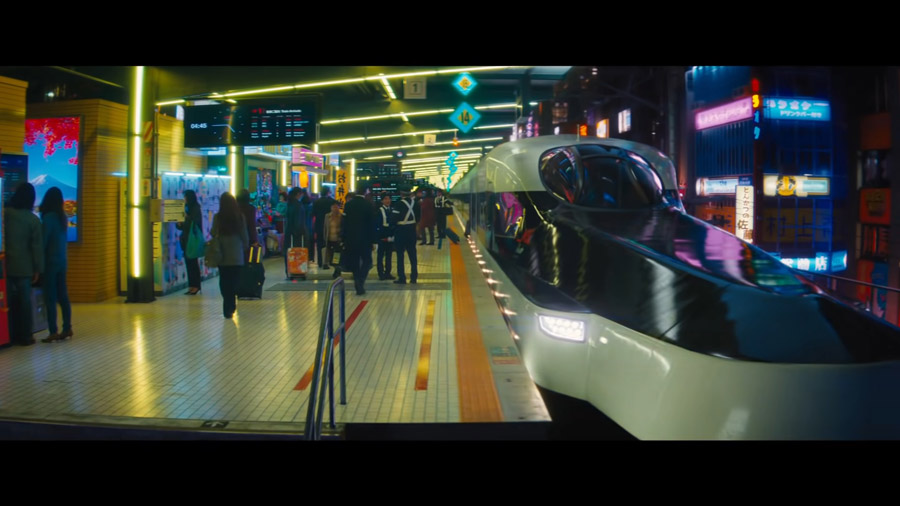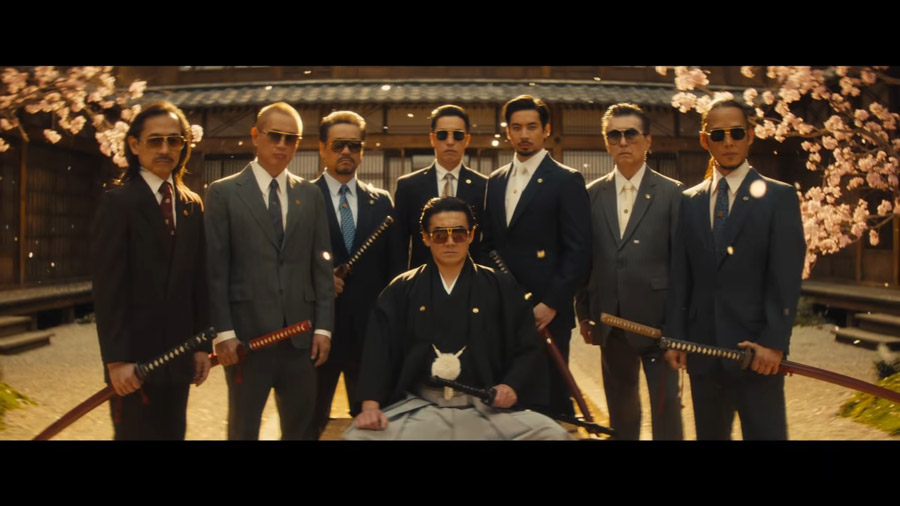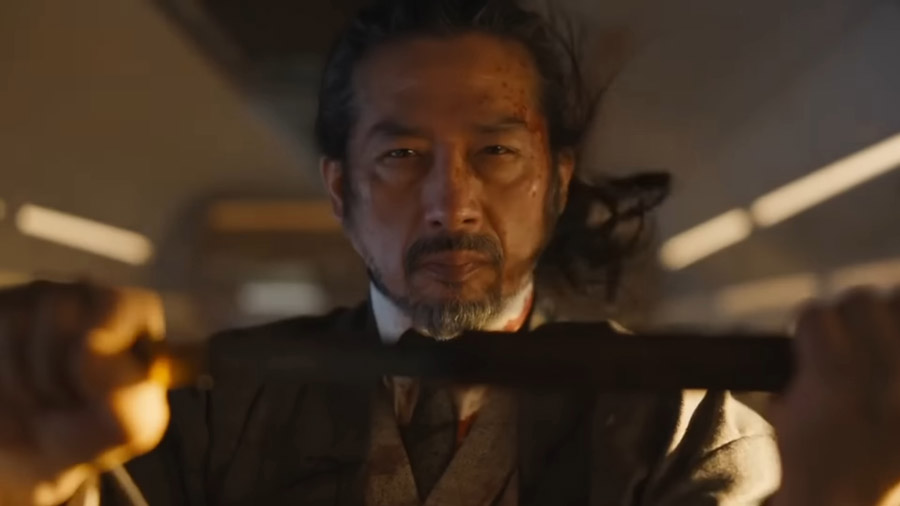Based on Maria Beetle’s 2010 action-comedy novel, Bullet Train is a movie not without faults. Subject to a backlash among many movie critics, it is a film that has been criticised due to its sad portrayal of Japanese daily life.
Not only have many of the book’s characters been replaced by a few of Hollywood’s glamorous celebrities, such as Brad Pitt, Bad Bunny, and Aaron Taylor-Johnson, but specific traits have been manipulated to the tune of whitewashing. It has not only turned modern-day Japan into a caricature of various stereotypes but has also exacerbated some of the traits we have all grown to love Japan for.
Here are the top 10 Japanese stereotypes present in Bullet Train that have, for better or worse, been a central talking point among its critics. Warning: Spoilers ahead!
- Public Transportation is always punctual and on-time
- Everyone is expected to be polite at all times
- Everyone is expected to be quiet in public
- Anime culture is part of everyday life
- Japanese toilets are a top cultural experience
- Yakuza are automatically evil, weapon-wielding gang members with pompadours
- In an era dominated by firearms, Japanese adversaries still wield katanas
- As a patriarchal society, Japan is still sexist
- Japanese people love abstract metaphors
- Dread it, run from it: Truck-Kun is undefeated
1.) Public Transportation is always punctual and on-time

One thing Japan takes exceptional pride in is its public transportation system. In a widespread article a few years back, one of the country’s train operators once apologised to its commuters for leaving 25-seconds too early!
At times, Japan can be seen as the closest thing the world has to a Utopian society. It is not any different in the movie, as multiple scenes show assassins needing to adjust (and being left) to the train’s strict departure times at its many stations.
2.) Everyone is expected to be polite at all times

In the middle of a fight scene between Ladybug and Tangerine, two of the assassins in the movie, a Japanese car attendant comes in to offer the two refreshments.
The two stopped their combat to accommodate the staff in an exchange that provided plenty of “Domo arigato”s and half-head bows.
In the heat of the battle, the two stopped fighting to respect Japanese culture.

Additionally, Japanese people are incredibly particular in not creating scenes that would draw attention and disturb others. What they would not want to do is cause disturbances in a nation that prides itself as prim, proper, and rule-abiding.
Although not common in modern Japanese commuting, the quiet car appears in the movie. It is more an unwritten rule instilled as an essential value in respect growing up. Assassins are shushed multiple times whenever they make even the littlest noise whilst fighting to the death.
4.) Anime culture is part of everyday life

Whether Japanese people like it or not, Anime culture is one of the main traits the country is known for, at least to the outside world. The everyday commuter is immersed in the sights and sounds of 2D character collaborations in the most mundane features of everyday life.
The character cart in the bullet train is an excellent example of the daily challenges the tired commuter has to see on the way home from a long day at work. Momomon, the mascot in the show who hides one of the assassins, is not expected at all to be part of the combat, displaying just how standard characters feature in day-to-day life.
5.) Japanese toilets are a top cultural experience

If you ask a foreigner what he likes about Japan, you would hear praise about the automatic toilets. Not only do these open up for you the moment you’re about to use them, but they also possess many different features to give you the best experience. It could be the built-in bidet that sprays water at just the right temperature and pressure.
Perhaps the toilet’s built-in blower keeps the critical areas dry and ready to go. Maybe it could even be the massage that loosens up your bum after long hours at the office. Whichever feature it may be, these all feature in many scenes where Ladybug takes a breather in the train bathroom.

You’ve seen it in movies, anime, and various TV shows: The evil faction in Japan (according to Bullet Train) is the Yakuza. Although heavily associated with violent crimes, it has long been corrected that the Yakuza are just misunderstood members of Japanese society.
As usual, though, Hollywood portrays the faction the way we know the Yakuza with optional masks that scream machismo energy, suit-and-tie, tattoos, and weapons.
7.) In an era dominated by firearms, Japanese adversaries still wield katanas

In its many set-pieces, even the assassins wonder why the Japanese gang members resort to swords instead of guns. Admittedly, it is dazzling when conflicts are resolved in stylistic melee combat, but that’s not how the world works.
The Way of the Bushido can only take one so far, as in only the wildest fictional tales can people deflect a spray of bullets from a Tommy gun en route to a clean killing blow. Not to say Bullet Train was not a wild, fictional tale, but it didn’t work out here.
8.) As a patriarchal society, Japan is still sexist

As a patriarchal society today, Japan emphasises the father’s role in a family unit. The father is to be the head of the house and the breadwinner, protecting the well-being of each member. The movie has this as one of its central themes in its plot. Multiple characters in the film are fathers motivated by the act of safeguarding their loved ones.
Being a heavily conservative society, Japan is still quite behind in the concept of feminism and how it relates to gender roles in culture. The main female assassin also constantly portrays herself as weak or used by assailants to escape trouble. The movie still adds to the stereotype of whether it represents her as cunning rather than soft.

Fate and destiny are two concepts that are the primary elements in the movie’s story. They are brought up constantly through wacky metaphors by the elder characters. One of them states, “If you don’t control your fate, it will control you… There is no good or bad luck; we are all agents of fate.”
There was a reason behind each event happening towards the end of the movie. This created a butterfly effect that caused many layers and ripples. As a predominantly Shintoistic and Buddhist nation, Japanese people love their proverbs to explain the supernatural and unexplainable.
10.) Dread it, run from it: Truck-Kun is undefeated

The most common (and laughable) stereotype from an Anime is the Isekai trope. Here, characters die early in the series, usually due to locomotives such as trucks and trains and are transported to another world. This was teased early on, with the main character almost stepping into the path of an automobile. At the end of the movie, this is also how one of the characters meets their fate. It is a tale as old as time, the most recognisable stereotype that the veteran anime watcher identifies.
Even if the movie comes off as satirical and overly-goofy at times, Bullet Train is still an enjoyable ride. Having said that, It will have a tough time shedding its overly Westernised footprint with its actors and cultural oversights. Additionally, pacing issues may juxtapose the high-octane speed of the train and the movie’s action. Nevertheless, the gory action sequences do just enough to keep it from being an utterly snooze-free journey.








































